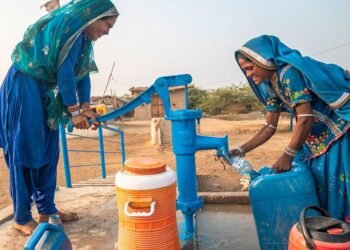The menace of ‘Galamsey’ is still lingering in the country and currently causing a serious environmental crisis due to the widespread practice of illegal mining activities. This unregulated and destructive form of mining is not only damaging to the environment but also poses a significant threat to Ghana’s water treatment plants.
Experts, technicians, and academicians at a workshop on water bodies restoration have painted grim pictures of water bodies in the country.
This is due to the use of dangerous chemicals, heavy machinery, and uncontrolled digging in areas such as forests, riverbanks, and agricultural lands. Despite its illegality, ‘Galamsey’ remains a lucrative industry due to its potential for quick financial gains.
“These days ‘Galamseyers’ have become so notorious, rich, and strong that if you arrest them the next day they are out. If ‘Galamsey’ is not stopped water supply to Sekondi-Takoradi, Cape Coast Elmina and surrounding communities will be seriously challenged.”
Seth Atiapah, Regional Chief Manager of the Ghana Water Limited
One of the most significant impacts of ‘Galamsey’ is the contamination of water sources. Miners frequently use mercury and cyanide to separate gold from other minerals, resulting in the release of toxic substances into water bodies. These chemicals find their way into rivers and streams, polluting the water supply for nearby communities and posing serious health risks to both humans and aquatic life.
The impunity with which such deadly deeds are committed is scary and the seeming helplessness gives great course for worrying.
The Regional Chief Manager of Ghana Water Limited (GWL), Seth Atiapah, indicated that Chang fang machines, the weapons of destruction are often seen lined up on some of the riverbanks with unbridled audacity.
Also, The Deputy Managing Director of the GWL, Peter De-veer said the havoc caused by illegal miners on water bodies had become a human rights issue as people’s very existence is being threatened.
The ‘Drowning’ Act of Galamsey
The pollution caused by ‘Galamsey’ adversely affects the quality of water supplied to treatment plants. Increased levels of heavy metals and other harmful substances interfere with the purification processes employed by these plants, making it more challenging to produce clean and safe drinking water.
This compromised water quality threatens the health and well-being of Ghanaians who rely on these treatment facilities for their daily water needs.
Some communities especially in the Central and Western regions are beginning to feel the effect hard. Residents carry gallons in search of water as GWL production at Sekyere Hemang has already been cut by 30 percent.
Indeed, the GWL has expressed grave concern at the high turbidity of the River Pra at Daboase and Sekyere in the Western and Central regions respectfully, warning that if stringent measures were not taken the plants could be shut out completely.
An associate Professor of Water and Environmental Quality at the University of Cape Coast, Prof Albert Ebo Duncan, said the problem was not about Sekyere Hemang or Daboase, “it’s about the management of our water bodies across the country”.
He indicated that though 70 percent of the earth was water, two-thirds of the world’s water is saline. “Out of the freshwater, two-thirds were in glaciers and ice caps,” Prof Albert Ebo Duncan emphasized.
The need to remove heavy metals and toxins from polluted water significantly increases the overall cost of water treatment. This places a financial burden on treatment plants, which may lack the necessary resources to invest in advanced filtration technologies and equipment.
According to Prof Duncan, past reforms had been geared towards water resource development and not management, indicating that the Integrated Water Resource Management policy had not worked as expected.
The environmental damage caused by ‘Galamsey’ further highlights the need for sustainable water management practices. Treatment plants are compelled to develop innovative strategies to mitigate the impact of mining activities, such as introducing stricter legislation and collaborating with relevant authorities to combat illegal mining.
The devastating effects of ‘Galamsey’ or illegal mining on water treatment plants in Ghana cannot be ignored. The contamination of water sources, compromised water quality, reduced water quantity and infrastructure damage pose significant challenges to the provision of clean and safe drinking water for communities.
Urgent action is required from government agencies, local communities, and stakeholders to curb illegal mining activities, protect water sources, and ensure the sustainability of water treatment facilities. Only through collective efforts can Ghana safeguard its precious water resources and secure a healthier future for its citizens.
READ ALSO: The Eminent Threat of Galamsey on Lives: Tragedy Strikes in Amenfi East



















